(MENAFN- IANS)
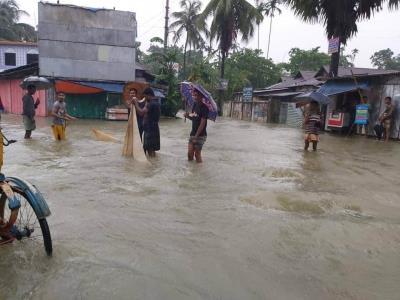
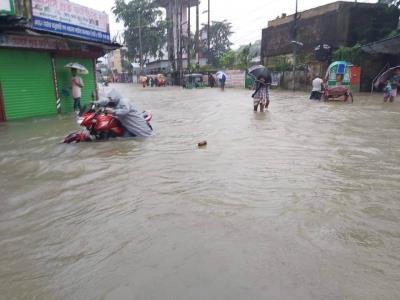
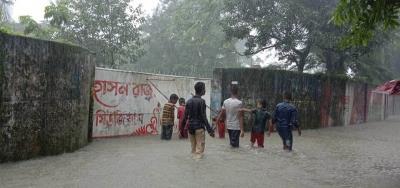
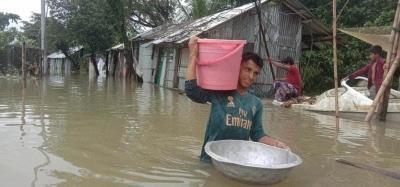
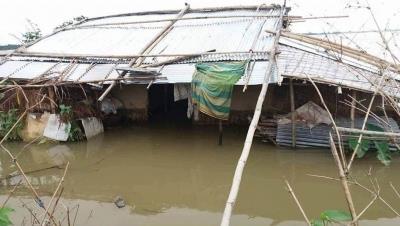
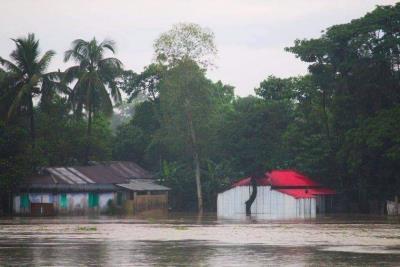
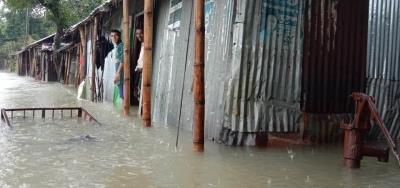
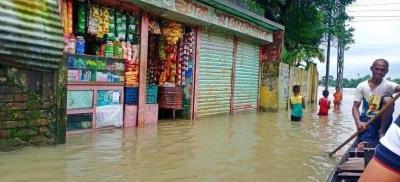
By Sumi Khan
Dhaka, July 21 (IANS) The flood situation in Bangladesh continues to be grim, with nearly one third of the country deluged by floodwater after heavy rains for over a month now. Around 15 lakh people in Bangladesh have been affected by floodwater -– a double whammy for them after the coronavirus crisis.
An official dubbed the downpour and consequent torrents of floodwater rushing downstream in Bangladesh rivers for over the past one month as "one of the deadliest in the decade".
Bangladesh is criss-crossed by 230 rivers, including 53 that come through India. Two main Himalayan river systems -- the Brahmaputra and the Ganges -- that flow through India and Bangladesh remain swollen.
The water level in the Ganges rose by one cm and two cm at Pankha in Chapainawabganj and at Rajshahi stations respectively in the past 24 hours though it was flowing 184 cm and 188 cm below the danger mark at the two places, BWDB officials told IANS.
The BWDB local office said it had recorded rising water level at various points like Pankha, Rajshahi, Hardinge Bridge, Talbaria and Goalanda in the past 24 hours ending 9 am on Tuesday, Board's Superintending Engineer Mukhlesur Rahman told IANS.
The increase in water level in the Ganges has aggravated the flood situation in the riverbed (locally called char) and other low-lying areas in the region.
Almost 40 lakh people have also been hit by monsoon floods in South Asia, including 15 lakh in Bangladesh.
The monsoon -- which usually falls from June to September -- is crucial to the economy of the Indian subcontinent, but also causes widespread death and destruction across the region every year.
Bangladesh Water Development Board (BWDB) officials said about a third of the flood-prone Bangladesh, a delta nation criss-crossed by hundreds of rivers, was under water, with village homes and roads inundated by knee- or waist-deep floodwater.
"The floodwater level is constantly rising; we have never seen this situation in the last few decades," said an affected woman, Asmani Begum.
Another flood-affected person, Kali Tara, rued: "We have been flooded in. We can't even move out with our cattle. We are using a boat to go out. Me and my husband cultivate a small piece of land to produce vegetables. We survived by selling these in the market. We are in a big crisis for the last 5 months due to coronavirus pandemic. And now the flood. The rain has not stopped for the last one month. We are worried -- what is coming next. How we'll survive with our children? We're having issues regarding food. Our household items are flooded."
"This is going to be the worst flood in a decade," warned Bangladesh's Flood Forecasting and Warning Centre (FFWC) Executive Engineer Arifuzzaman Bhuiyan.
The flood came late in June, and after brief easing of the situation, it continued to worsen, destroying crops and driving people from their homes in many impoverished areas.
Bhuiyan said the water level in Atrai river had increased 106 cm at Mohadevpur point in Naogaon district but was flowing 129 cm below the danger mark; it is flowing seven cm below the danger level, after a 14 cm rise at Atrai point on Tuesday morning.
Of the 13 river points monitored in eight districts under Rajshahi division, increase in water levels was recorded at nine places, decrease at three places and static at one place in the last 24 hours.
Bhuiyan said water level in the Jamuna River has been receding continuously for the last couple of days but was still flowing above the danger marks at Sariakandi in Bogura and Kazipur and Sirajganj stations.
The Gur river was also flowing 67 cm above the danger mark at Singra in Natore, recording an increase of 10 cm in the water level. The Atrai river was flowing 100 cm above the danger mark at Baghabari in Sirajganj district.
Meanwhile, many areas continued to be waterlogged due to the inundation of mainland and damaging of flood-control embankments at different places in the division. Around 31,836 households, comprising 1.28 lakh people staying at 158 'char' and other low-lying villages, were affected by floodwater.
Floodwater had submerged crops on 8,831 hectares of land in Bogura district as the Jamuna river was flowing 88 cm above the danger mark at Sariakandi point.
In Naogaon district, around 18,800 families have so far been affected in Sadar, Manda, Atrai, and Raninagar upzilas and 600 other families in Shingra and Naldanga upzilas in Natore district, said Moinul Islam, Additional Commissioner of Rajshahi division.
Ten villages were waterlogged due to damage to portions of Nandaibari-Krishnapur-Malanchi flood control embankment on the Little Jamuna river in Raninagar upzila of the same district that inundated many adjacent areas, besides affecting standing crops and fish ponds.
Around 3.37 lakh people living in 676.5 square km of low-lying areas were affected and standing crops on around 14,013 hectares of land submerged in Sadar, Kazipur, Belkuchi, Chowhali, Shahjadpur and Ullapara upzilas in Sirajganj district. The Jamuna was flowing above the danger mark at the Sirajgonj, Baghabari and Kajipur points, Moinul said,
He said that district and upzila authorities along with local public representatives have intensified relief activities in the worst-affected areas.
The district administrations and BWDB are closely monitoring the flood situation and taking necessary steps to tackle the crisis, officials claimed.
--IANS
sk/tsb
MENAFN2107202002310000ID1100516984
Legal Disclaimer:
MENAFN provides the information “as is” without warranty of any kind. We do not accept any responsibility or liability for the accuracy, content, images, videos, licenses, completeness, legality, or reliability of the information contained in this article. If you have any complaints or copyright issues related to this article, kindly contact the provider above.